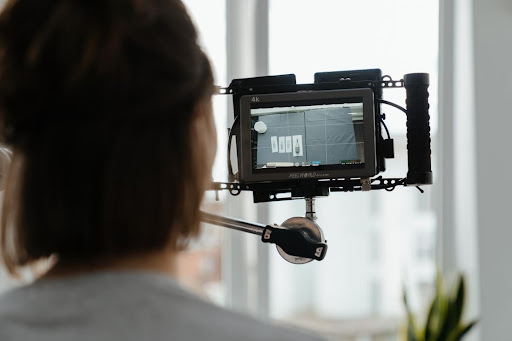As eager as we all are for life to “go back to normal”, we also know that some things will never be the same again. The live events industry is no exception. COVID-19 has forever altered employee expectations, standard operating procedures, risk management, and more for the events and entertainment industry.
Uncertainty reigned during the pandemic. Seeking stability, event production companies, venues, and live event freelancers made dramatic changes. So now that the world is working towards herd immunity and the live events industry begins to resume, what can we expect in the coming months and years? Read on to find out.

Live Events Trend #1: Clients will laser focus on in-person event ROI
This should have been a no-brainer even before the pandemic, but those of us in the industry know the truth: many of us operated with very little accountability to our margins. Years of sustained cash flow supported bad habits, but the famine that followed that feast will force many event companies to keep a more detailed P&L. More and more companies will ask themselves:
- Am I tracking and up-charging for that last-minute sub-rental?
- Am I billing the client correctly for labor?
- Did I really make money on that job?
If you haven’t pulled every lever you could have to cut costs without sacrificing quality, you are doing yourself and your business a disservice.

Live Events Trend #2: More events will follow a hybrid model
The pandemic compelled us all to move to virtual alternatives, whether that was weekly Zoom game nights with your friends, virtual options for corporate events, or live music via livestream. While many of us are rushing back to the good old days of in-person socializing, many clients have discovered the advantage of running virtual versions of their events to expand their audience.
Maintaining virtual versions will allow the flexibility and accessibility necessary to reach more people. So while we eagerly rush back to face-to-face, event companies will also have to consider and arrange virtual versions to expand their event to as wide an audience as possible – and ensure both in-person and virtual user experiences are high-quality.

Live Events Trend #3: Travel will return, but event companies will also need local crew
Before COVID, many event production companies were happy to fly their favorite crew members where they needed to go to make a successful event come together. This method offered its advantages: working with the same crew members time and time again ensured continuity, quality assurance, and the comfort of familiarity for all involved.
Travel will return, but if there’s one industry that can empathize with what the live events industry has been through, it’s the travel industry. According to research from Goldman Sachs in a recent state of the industry series by The Event Leadership Institute, airline traffic isn’t predicted to reach pre-pandemic levels until 2023.
This isn’t just because of the increased focus on ROI mentioned in our first prediction. The travel industry will take a long time to recover. Reduced capacity combined with an enthusiastic resurgence in demand to travel will inevitably take some time to resolve and normalize.
While the live events industry waits patiently for the travel industry to recover, event companies will have to seek out trusted local labor sources to supplement their crew benches.

Live Events Trend #4: The crew classification debate will evolve
Pre-pandemic, liability concerns and ever-smaller legal loopholes over the past few years had already been driving many event companies to either tighten up their 1099 process or start “W2-ing” their crew members.
Because of the expense and the pain of change, many companies never did anything to modify their processes, even as legislation like AB5 passed in major live event markets like California and more labor legislation brews in Congress.
Now is the time for event companies to take a critical eye to the extent of their 1099 practices – including those of your partners you may be liable for.
The biggest demand, however, will likely come from those workers who suffered thanks to their status as a freelancer when the pandemic hit. It will surprise no one to hear of the struggles many faced applying for unemployment insurance. Those workers with a W2 had an easier time securing their safety nets and riding out the pandemic, while many others had no choice but to seek work outside of the industry.
These folks won’t soon forget the lessons of the pandemic – and they’ll appreciate companies that value them enough to provide the security of a W2.

Live Events Trend #5: The way we communicate must improve
Pre-pandemic, too many of us in the industry accepted the chaos of disjointed texts, emails, and phone calls to herd our crews of freelancers. Even though we were barely treading water, we did this because, well, that was the way we’d always done it.
But the world is digitizing for the better, and your crew freelancers know it, especially those who turned to other jobs in the gig economy to make ends meet during COVID. Whether they were moonlighting on a handyman home repair app or delivering meals for a food delivery app, your freelancers expect an easy-to-use experience that they can manage from their mobile phones.
The event companies that can embrace this change won’t just improve the lives of their crew – they’ll streamline their business as well. There’s a lot less room for error when you exchange the chaos of miscommunication into the convenience of comms through an app.

Live Events Trend #6: Safety is the new luxury
As experiential event producer Jaci Badzin told Forbes, “After a year of being repeatedly told we are not safe to leave the house, making people feel safe and welcome must be key to any event. Establishing trust will be a critical component to the marketing strategy, and clear communication about safety protocols must be emphasized.”
This insight expands beyond how you support your clients in organizing their events successfully. It applies just as much to the way you manage your event crew. Be proactive. Don’t just adhere to local or state guidelines for safety practices. The key is to communicate to your staff the measures you are taking to ensure their personal safety and wellbeing – a message they’ll be sure to appreciate after such a long time away from work.

Live Events Trend #7: Events have to offer a meaningful experience
Nothing was made clearer during COVID that we are all connected to and responsible for one another.
Whether it’s in the approach you take to producing an event for a client or managing your event staff, the culture you cultivate and convey matters. Companies that can infuse their events and business practices with social value will see the difference – in both attendance at their events, and the kind of crew talent they can attract and retain.
